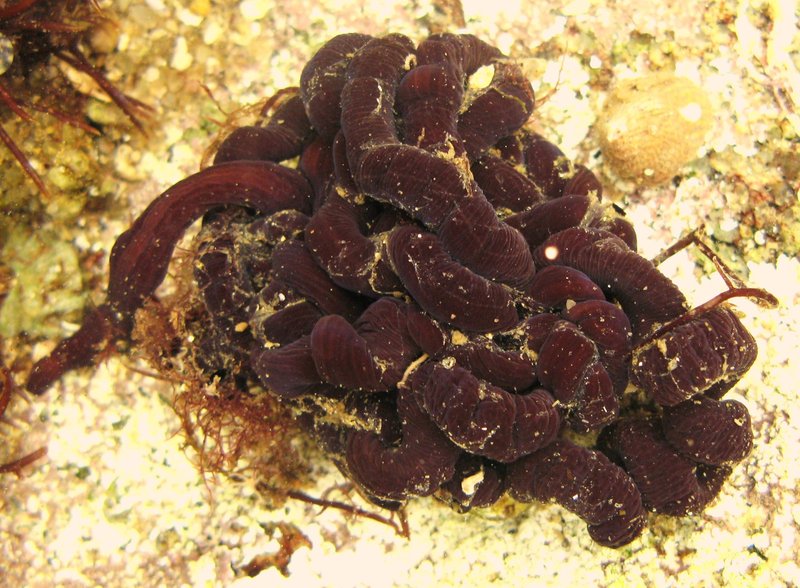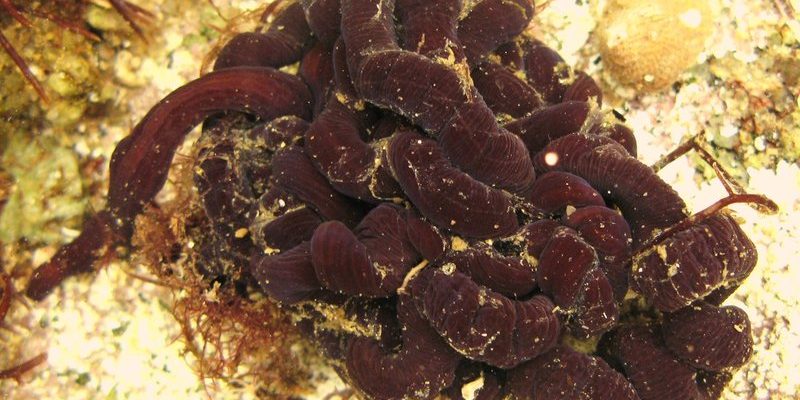
Imagine being in the ocean’s shallow waters, like a detective on the hunt for clues. Identifying bootlace worms can feel like unraveling a mystery, especially since they can blend into their surroundings so well. So, let’s dive in and explore how to spot these intriguing creatures, learn about their habitat, and understand why they matter in the grand scheme of things.
What Are Bootlace Worms?
Bootlace worms are a type of marine polychaete worm, which essentially means they belong to the segmented worm family. These creatures are often found in mud and sandy areas of the intertidal zone, the area between high and low tide. Picture those muddy spots after a rainstorm; that’s where you’re likely to find them! They have a long, slender body, which is usually a mix of brown, green, or even bright colors.
Here’s the thing: despite their impressive length, bootlace worms are often hard to spot. They tend to hide in their burrows or under rocks, making them masterful escape artists. If you aren’t careful, you could easily miss them as they blend in with the environment. They spend their time hunting for small prey like crustaceans and other tiny organisms, using their unique feeding adaptations.
But remember, these worms aren’t just fascinating creatures; they play a vital role in their ecosystems. By breaking down organic matter and serving as prey for various predators, they help to keep the intertidal ecosystem balanced. You might be wondering what exactly it takes to spot these elusive creatures. Let’s break it down.
Where to Find Bootlace Worms
You may be asking yourself, “Where do I even start looking for bootlace worms?” The key locations are typically found in **intertidal zones**—those areas between high and low tide. Look for muddy or sandy substrates along rocky shores, estuaries, and coastal beaches.
Here are some tips to help you find bootlace worms:
- Timing Matters: Visit during low tide when the water recedes, revealing more of the shoreline and its hidden inhabitants.
- Look Closely: Check under rocks, seaweed, or any debris. Bootlace worms often camouflage themselves among these materials.
- Stay Quiet: Movement can scare them away. Take your time and observe the surfaces carefully.
If you’re lucky, you’ll not only see bootlace worms but also witness other fascinating marine life. It’s like nature’s very own reality show, with plenty of drama and intrigue!
Identifying Characteristics of Bootlace Worms
Now that you know where to look, let’s discuss how to identify bootlace worms. These creatures have several distinct characteristics that set them apart from other worms and marine life.
First, their incredible length is one of their most striking features. Bootlace worms can stretch up to 55 meters, which is longer than most people. When you see one, keep in mind that it can be coiled or bunched, making it tricky to gauge its true length.
Another identifying trait is their **coloration**. They often display bright hues like yellow, orange, or even deep blue. This bright coloring serves as a warning to potential predators, suggesting they may be toxic—not that you’d want to test that theory!
Additionally, their body is covered in tiny bristles called *chaetae* that help them to swim and grip surfaces. If you’re feeling adventurous, try carefully examining the worm’s surface with a magnifying glass. Those bristles can be quite fascinating to look at up close!
The Role of Bootlace Worms in the Ecosystem
You might wonder, “Why should I care about bootlace worms?” Well, these creatures serve several essential functions in their ecosystems.
First, they participate in **nutrient cycling**. As bootlace worms consume organic material and smaller creatures, they break down nutrients into forms that other marine life can use. This process helps rejuvenate their environment, ensuring that plants and other animals thrive.
Secondly, bootlace worms are a food source for various predators, including fish, crabs, and even some birds. By serving as prey, they contribute to the food web’s balance. The disappearance of these worms could lead to consequences that ripple through the ecosystem and impact other species.
Lastly, they help aerate the sediment in their habitats, allowing for better water circulation. This aeration process is crucial for the health of marine life living in sedimentary zones. A healthy environment is a happy environment!
Common Misconceptions About Bootlace Worms
Did you know there are a few myths surrounding bootlace worms? Let’s clear up some common misconceptions:
First, many people assume all worms are harmful. However, bootlace worms are mostly harmless to humans. They don’t bite or sting, and while they may look intimidating, they’re just trying to go about their wormy business.
Another misconception is that the length of the bootlace worm is strictly related to its age. While size does correlate to age to some extent, the actual length can vary based on environmental factors and food availability. So, if you see a particularly long one, it’s not necessarily a grandpa worm!
Lastly, some folks think they can easily keep bootlace worms as pets. While they’re fascinating to observe, they thrive in specific conditions that would be hard to replicate in a home aquarium. So unless you’re ready to recreate a whole intertidal zone at home, it’s best to leave them in their natural habitat.
Conservation Considerations for Bootlace Worms
With the increasing impact of climate change and human activity on marine environments, it’s crucial to consider the conservation of bootlace worms and their habitats.
For starters, **pollution** poses a significant threat. Runoff from land can introduce toxins into coastal waters, disrupting the delicate balance of these ecosystems. It’s essential to reduce our waste and be mindful of how we interact with nature, ensuring we leave as little impact as possible.
Additionally, habitat destruction from coastal development can severely affect bootlace worm populations. Coastal areas should be protected and preserved to maintain biodiversity and ensure that vital marine species continue to thrive.
Lastly, educating others about these creatures is key. By spreading awareness about the role bootlace worms play in the ecosystem, we can encourage conservation efforts and foster a sense of responsibility toward marine life. Who knows? You might inspire someone else to become a champion for these extraordinary creatures!
Final Thoughts on Bootlace Worms
Identifying bootlace worms in intertidal zones can be a rewarding experience. By learning about their characteristics, habitat, and role in the ecosystem, you’re not just becoming a better naturalist but also a steward of marine environments.
The next time you’re near the water, take a moment to slow down and look closely. You might just find these colorful, enigmatic creatures blending into the sand or hiding beneath a rock.
So, whether you’re an avid beachcomber or a curious adventurer, keep your eyes peeled. Bootlace worms are out there, just waiting to be discovered. Happy exploring!

